Switzerland was pretty flat a few million years ago. This was until the plates started moving, creating the Alps as we know them today. What is left of the earth’s sliding and shifting is a unique geography with hundreds of valleys, river sources, lakes, and peaks.
Here are some interesting facts and figures about Switzerland’s lakes and mountains:
For a landlocked country, 1500 lakes are not too shabby.
Some lakes are more special than others, such as the largest lake in the Alpine region (Lake Geneva) and the largest body of water in Switzerland (Lake Neuchâtel). Among the smallest lakes are Lago di Poschiavo and Oeschinensee.
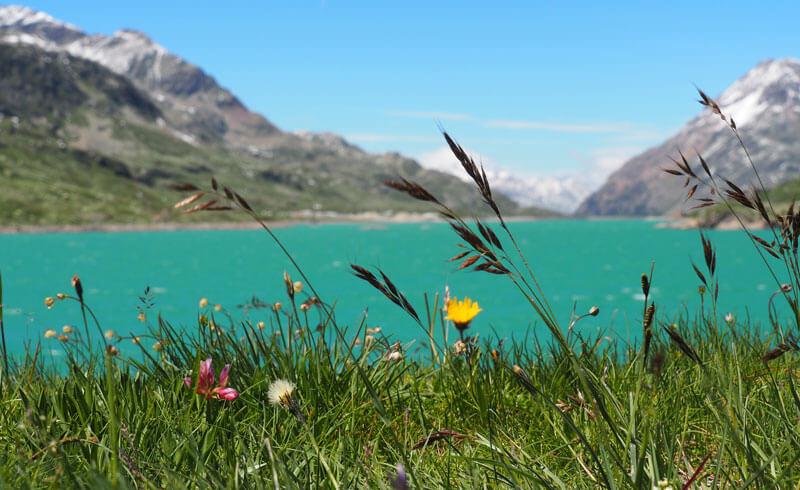
Switzerland’s land mass is only 0.4 percent that of Europe, but the country holds 6 percent of the continent’s freshwater reserves.
Forty percent of water originates from snow melt (“discharge”), and barely 2 percent from the melting of glaciers.
The freshwater is so clear that you can drink from rivers and lakes. And if you cannot see the bottom of a lake, it is considered dirty.
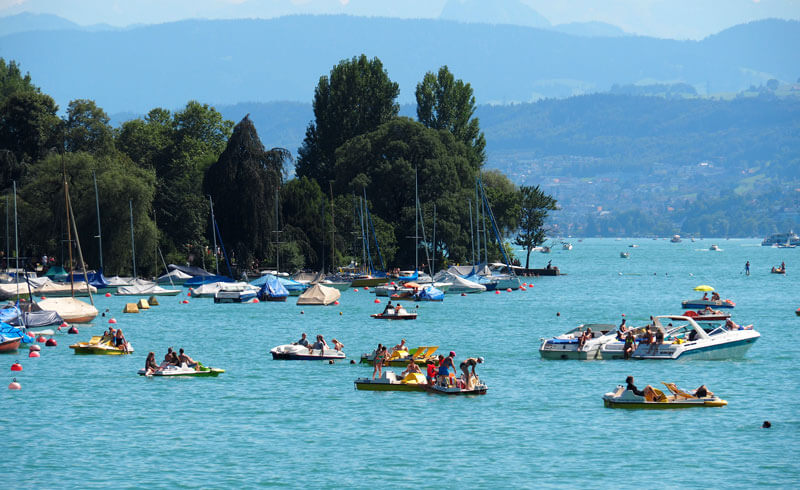
Switzerland has more high peaks than any other European country: 48 above 4000 meters.
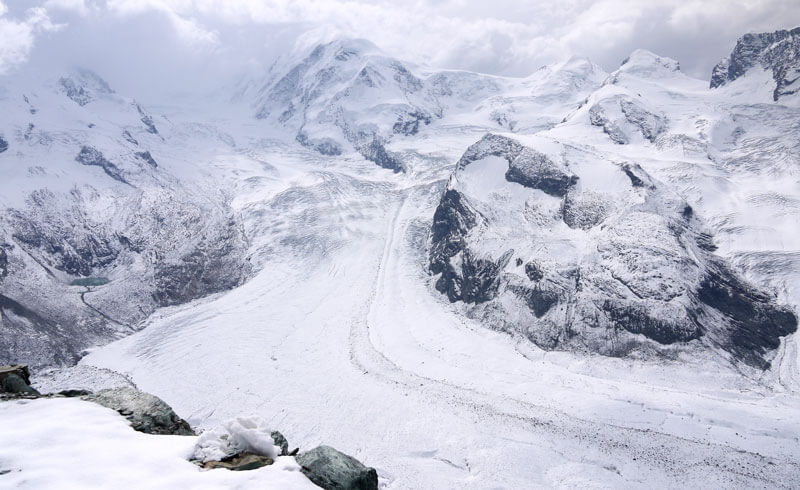
In fact, mountains cover a whopping 60 percent of Switzerland’s land area.
If Switzerland’s surface flattened like a pancake, the country would be 12.5 percent larger.”
With all these mountains, does it surprise that Switzerland has over 60’000 km of signposted hiking trails?
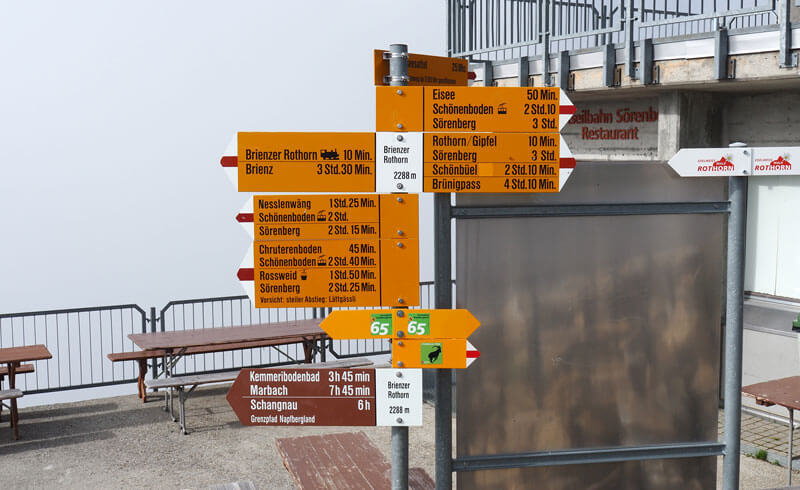
The highest railway station in Europe is in Switzerland, on top of the Jungfraujoch at 3454 meters.
Switzerland has nearly 5000 cable cars, inclines, and ski lifts.
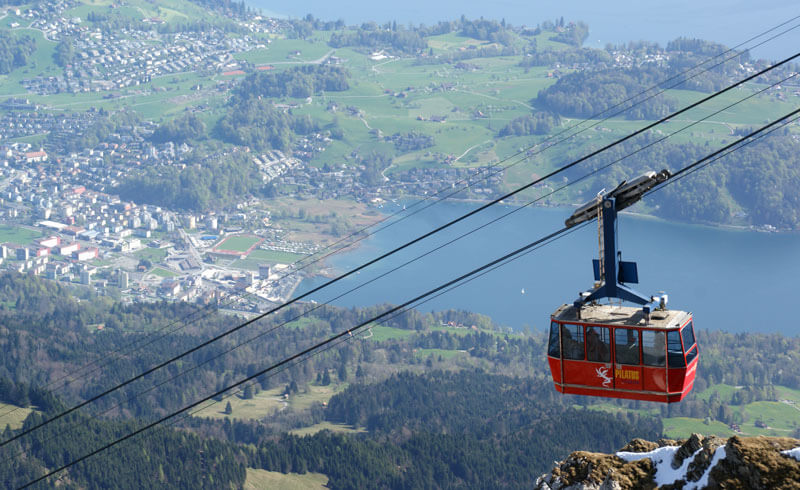
For those who want to take the stairs, the world’s longest staircase, with 11’674 steps, leads to Mt. Niesen in the Bernese Alps.
Europe’s highest wind farm is on the Nufenen Pass at 2500 meters above the sea. As of this writing, there are just 37 wind turbines in Switzerland.
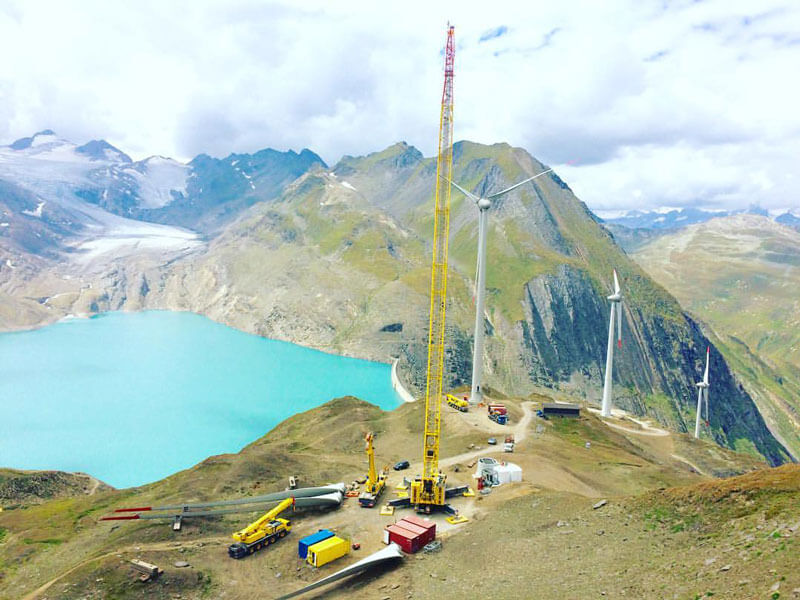
Although the Alps are generally associated with Switzerland, they also stretch through the following countries: Austria and Slovenia in the east, Italy, Switzerland, Liechtenstein, and Germany to France in the west.
Many of the mountains contain hollowed-out bunkers for army and civilian protection in the event of an attack.
The world’s longest railway tunnel is in Switzerland. It measures 57.1 km, and the construction took 17 years.
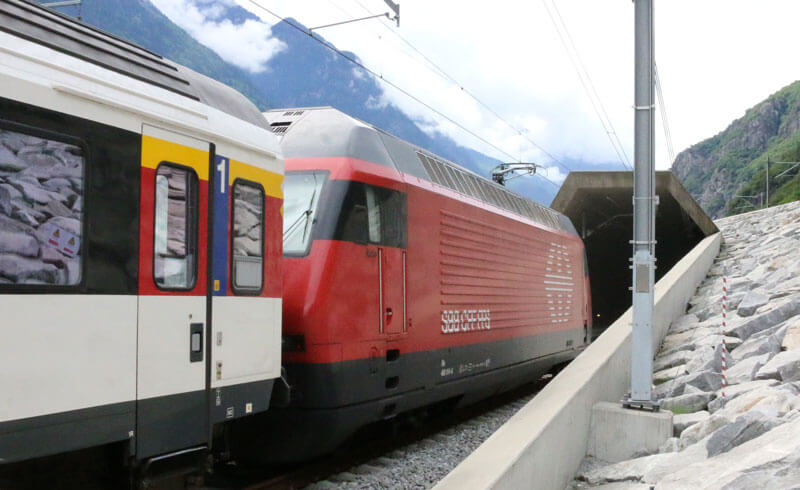
The Swiss are so clean they even wash their tunnels! You gotta see it to believe it…
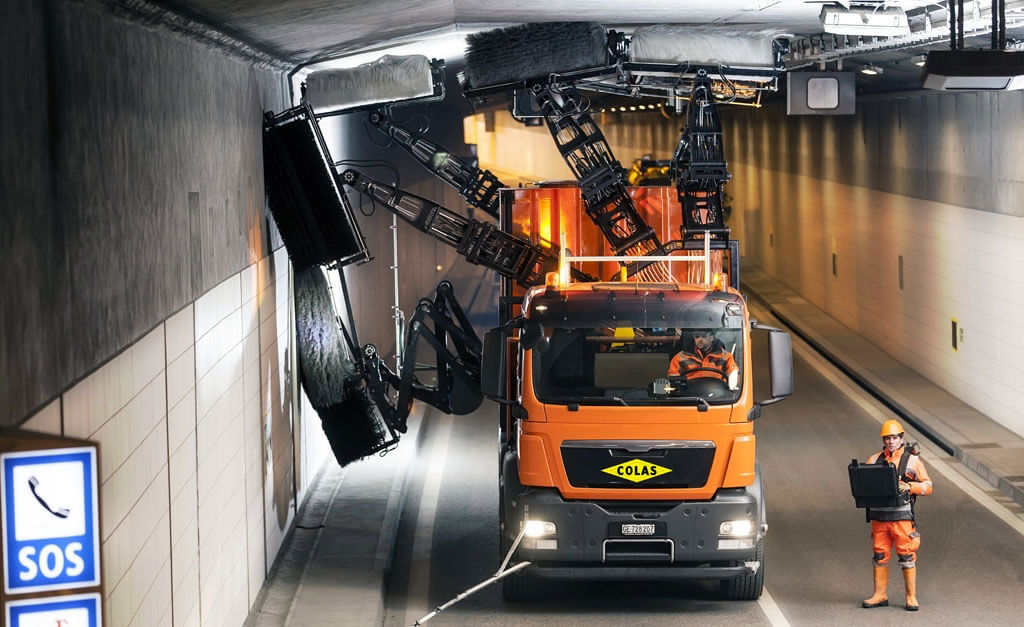
The Matterhorn has got to be the most iconic mountain in Switzerland. Have you added a visit to Zermatt to your bucket list yet?
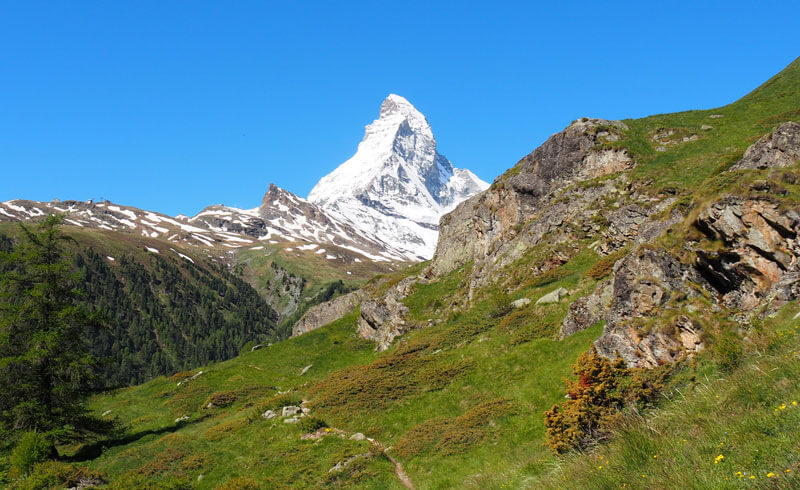
Now, download our e-book with 77 interesting facts about Switzerland:

(Sources: Surface area of Switzerland by swisstopo.ch, Mountains above 4000 m by Wikipedia, land area by Wikipedia, cable car statistic by seilbahninventar.ch, Mt. Niesen on Wikipedia, Water discharge stats and water sources)

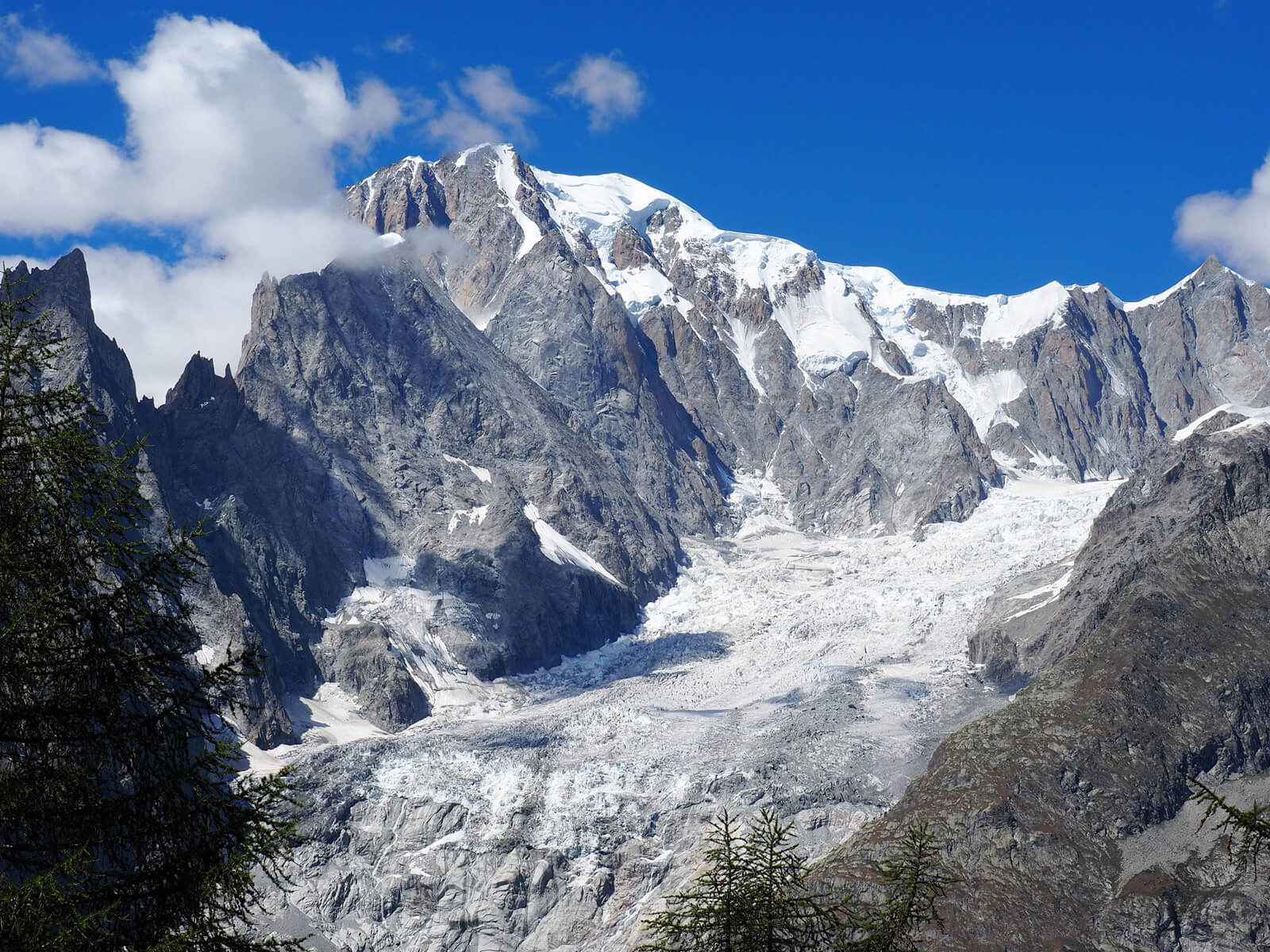
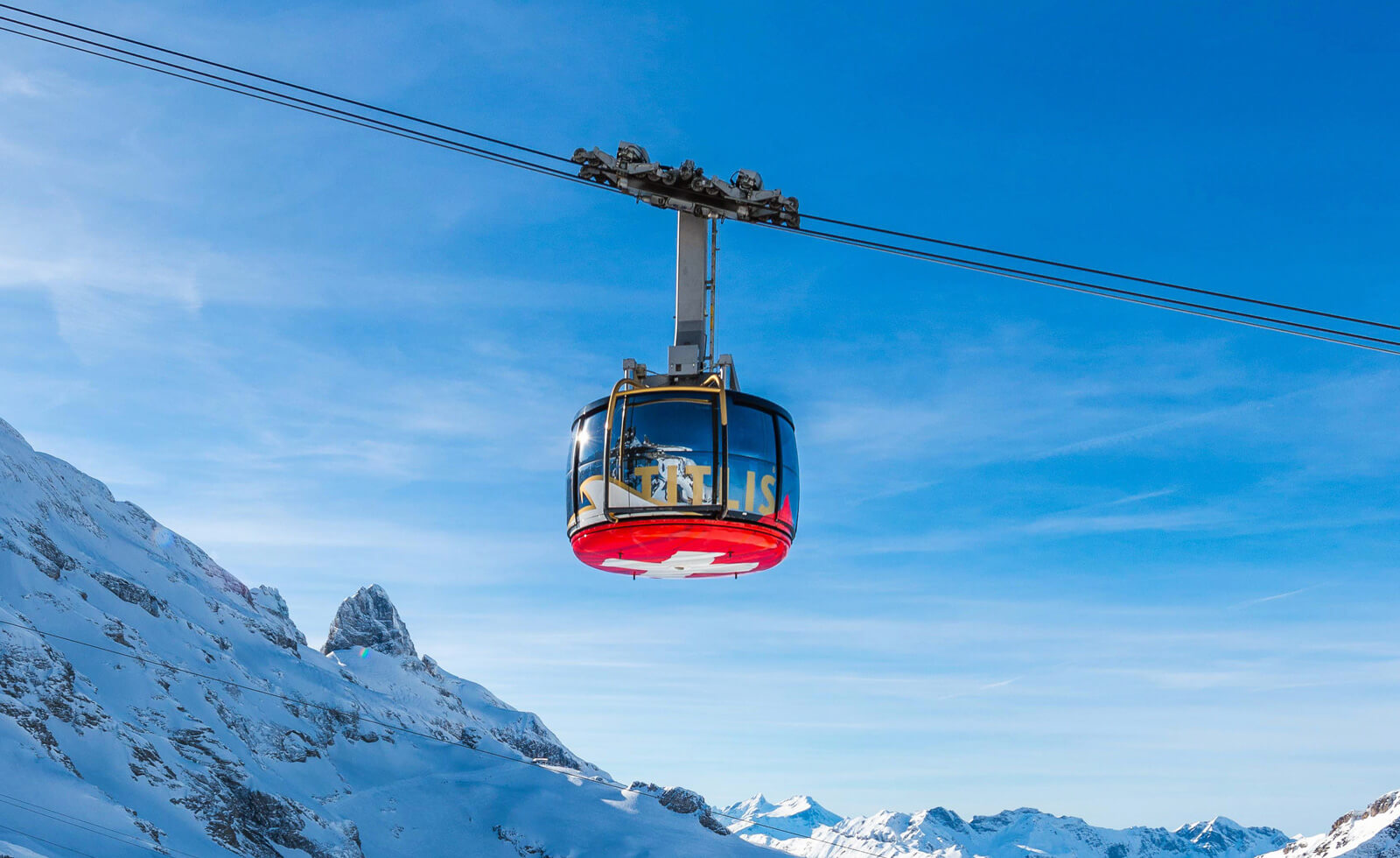

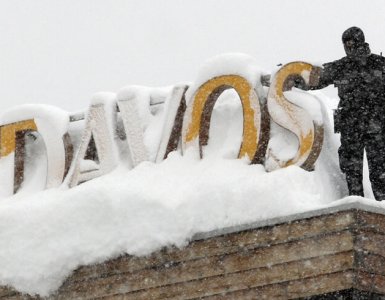
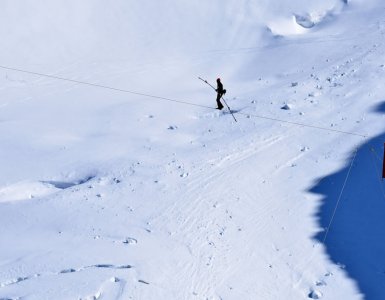

I really have to see the tunnel cleaning to believe it! ;)
I must see the Matterhorn some day! Thank you for the nice article.
great article, but I have a correction: Lake Geneva is not even close to Europe’s Largest lake. It’s the largest in the Alps though. https://en.wikipedia.org/wiki/List_of_largest_lakes_of_Europe
Note taken – thank you very much!
“As of this writing, there are just 37 wind turbines in all of Switzerland.”
I see they’ve already desecrated a nice view at high elevation. Hopefully the Swiss have enough respect for their spectacular scenery to limit those fossil-fuel-built eyesores to under 100. They should not repeat Germany’s assault on its historic countryside. You can’t “carefully site” such large towers unless rural-industrial landscapes are accepted as the new normal. Sadly, that’s true in many parts of the world now. The UK, Spain and Germany have already hit saturation levels of public acceptance, for a relative pittance of power.
The wind industry is predicated on building far more than the 250,000+ machines littering the world today. See the Stanford/Jacobson scheme for 3.8 MILLION of them in the name of “saving” the planet. Wildlife, especially bats, is being increasingly impacted, as well as human quality of life. There’s so much momentum to “go green” that the grim side of wind power rarely makes headlines despite new projects being constantly protested.
https://uploads.disquscdn.com/images/435a2312777f47c66c60511623dc0f6910b95b6c89cd0bcc44e30e5fc4d443ce.jpg
[…] out some more surprising facts about Switzerland or facts about lakes and mountains in […]
[…] out our facts collection about Switzerland's lakes and mountains or learn additional surprising facts about Switzerland. Still want more? Here is yet another post […]
[…] Are you a fact collector? Here are additional facts about Switzerland's lakes and mountains. […]
[…] It looks like you really dig facts! Have you spotted these surprising facts about Switzerland? Or how about upping your trivia skills by learning some facts about Switzerland's lakes and mountains? […]
[…] about learning 17 facts about Switzerland’s lakes and mountains? For even more “lake content”, we have put together a list of Swiss lakes that are […]
Is there a Burkhard, Burkhardt mountain in Switzerland?